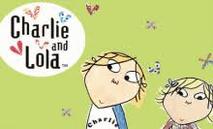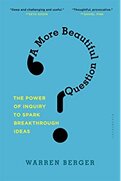
On Labour Day weekend, we’re heading back to MacDonald House for another fabulous popup exhibit – where we'll reconnect to familiar places and faces and welcome the new and the novel. Here's a little insight as to where our hearts and minds are at, as we launch this final exhibit in our popup series:
Summer exhibits are “our favourite and our best”
We love to quote Charlie and Lola when we think about imagination and creativity. There’s a playfulness to the way they express themselves that we believe belongs in education and our daily lives. It doesn’t matter how old you get, it’s never not ever too late to reconnect to your inner child!
Summer exhibits are “our favourite and our best”
We love to quote Charlie and Lola when we think about imagination and creativity. There’s a playfulness to the way they express themselves that we believe belongs in education and our daily lives. It doesn’t matter how old you get, it’s never not ever too late to reconnect to your inner child!
People can do really anything, we think.
Part of the magic of a popup exhibit is the people who gather. We sneak wonder and intrigue into our promotional language to capture the attention of anyone who’s ready to challenge their thinking or try something different. Then we stand back and witness this incredible dynamic unfold – young children, teens, parents, elderly, students, educators – all with unique and diverse perspectives, skills, and abilities, exploring and experimenting side-by-side. It’s something we will always treasure because it leads to wonder and discovery and memorable moments that, when we slow down and look closely enough, remind us that people are kind and honest and work ever so well together.
Timing is really, very much everything
The last week of summer and Labour Day weekend is a busy time for everyone – educators are busy planning, setting up, organizing; families are shopping, arranging, confirming. It sounds counter-intuitive to host an exhibit just as the flexibility of summer gives way to the routine habits of fall. But it’s actually the perfect time to freeze and reframe. Our summer popup exhibits invite you to stop and breathe amidst the chaos of transition. Come for an hour or stay for a day (or two, or three). Either way, the time you spend interacting with creative materials and ideas will fortify your reserves, strengthen your relationships, and energize you for the work ahead.
The stories are especially special
We’ll be honest here, we’ve only just recently recognized that we haven’t properly honoured the stories that emerge from our popup exhibits. Everything we do, see, touch; everything we experience individually and together – is part of the narrative of our lives. When we used to look back at our exhibits, we would see them as distinct, one-of-a-kind entities, connected over time. We would let the stories bubble to the surface, touch us deeply, then fade away. But now that we’ve begun to reconfigure our thinking, we can see our exhibits differently – each one, part of a greater whole, evolving over time. Story is the thread that binds them together and creates a sense of continuity. And continuity is something deeply missing in our schools, our work, and our communities. When we value continuity, we value our selves. So, join us for this retrospective popup exhibit and become part of the greater story.
Never, not ever now
There is a sweet spot that exists between the familiar and the novel; a fine balance between comfort and discomfort; a space between what you thought you knew and believed, and what you now know and believe. We originally planned to call this exhibit Never, Not Ever Now – not just as a nod to Charlie and Lola, or that sweet spot between the old and the new, but as a recognition that what we do in the here and now is not an isolated thing – it’s deeply connected to the past and the future. It is never just about what we can teach or learn now. Now is a transient moment that exists between two ‘thens’. If you’ve always wanted to attend a popup exhibit but it’s never, not ever been the right time, we’ll let you in on a little secret – this could be your last chance. Because this exhibit is shaping up to be the final bow of our super-popular exhibit series.
Our ethics are slightly askew
Children are born to learn. But there’s a paradox built into their wiring. They have an innate drive to follow their curiosities, copy and imitate, fail repeatedly, test and experiment, and yet, research shows they cannot thrive without us – without the guidance of family, community, a loving touch. Parenting and education are slightly in desperate need of an ethical compass – a ‘First, Do No Harm’ mantra. It’s about our real and perceived obligations to teach our children and ourselves. We absolutely, most definitely need to re-acquaint ourselves with the way children bombard us with questions; the way they jumble words together to create new ones; the way they think in metaphor. One of the books that has inspired us during our research for this exhibit is A More Beautiful Question by Warren Berger.
Part of the magic of a popup exhibit is the people who gather. We sneak wonder and intrigue into our promotional language to capture the attention of anyone who’s ready to challenge their thinking or try something different. Then we stand back and witness this incredible dynamic unfold – young children, teens, parents, elderly, students, educators – all with unique and diverse perspectives, skills, and abilities, exploring and experimenting side-by-side. It’s something we will always treasure because it leads to wonder and discovery and memorable moments that, when we slow down and look closely enough, remind us that people are kind and honest and work ever so well together.
Timing is really, very much everything
The last week of summer and Labour Day weekend is a busy time for everyone – educators are busy planning, setting up, organizing; families are shopping, arranging, confirming. It sounds counter-intuitive to host an exhibit just as the flexibility of summer gives way to the routine habits of fall. But it’s actually the perfect time to freeze and reframe. Our summer popup exhibits invite you to stop and breathe amidst the chaos of transition. Come for an hour or stay for a day (or two, or three). Either way, the time you spend interacting with creative materials and ideas will fortify your reserves, strengthen your relationships, and energize you for the work ahead.
The stories are especially special
We’ll be honest here, we’ve only just recently recognized that we haven’t properly honoured the stories that emerge from our popup exhibits. Everything we do, see, touch; everything we experience individually and together – is part of the narrative of our lives. When we used to look back at our exhibits, we would see them as distinct, one-of-a-kind entities, connected over time. We would let the stories bubble to the surface, touch us deeply, then fade away. But now that we’ve begun to reconfigure our thinking, we can see our exhibits differently – each one, part of a greater whole, evolving over time. Story is the thread that binds them together and creates a sense of continuity. And continuity is something deeply missing in our schools, our work, and our communities. When we value continuity, we value our selves. So, join us for this retrospective popup exhibit and become part of the greater story.
Never, not ever now
There is a sweet spot that exists between the familiar and the novel; a fine balance between comfort and discomfort; a space between what you thought you knew and believed, and what you now know and believe. We originally planned to call this exhibit Never, Not Ever Now – not just as a nod to Charlie and Lola, or that sweet spot between the old and the new, but as a recognition that what we do in the here and now is not an isolated thing – it’s deeply connected to the past and the future. It is never just about what we can teach or learn now. Now is a transient moment that exists between two ‘thens’. If you’ve always wanted to attend a popup exhibit but it’s never, not ever been the right time, we’ll let you in on a little secret – this could be your last chance. Because this exhibit is shaping up to be the final bow of our super-popular exhibit series.
Our ethics are slightly askew
Children are born to learn. But there’s a paradox built into their wiring. They have an innate drive to follow their curiosities, copy and imitate, fail repeatedly, test and experiment, and yet, research shows they cannot thrive without us – without the guidance of family, community, a loving touch. Parenting and education are slightly in desperate need of an ethical compass – a ‘First, Do No Harm’ mantra. It’s about our real and perceived obligations to teach our children and ourselves. We absolutely, most definitely need to re-acquaint ourselves with the way children bombard us with questions; the way they jumble words together to create new ones; the way they think in metaphor. One of the books that has inspired us during our research for this exhibit is A More Beautiful Question by Warren Berger.

We’ve come to realize that we need to ask ourselves more beautiful questions, like: If we’re born to inquiry, then why must we be taught? Is it possible to figure out what people know without testing them? How do we distinguish between what’s true and what's false? And is there a different question I should be asking? This exhibit, more than any other, is about questions. It’s about being courageous and bold enough to make mistakes and challenge our beliefs. We’re drawn to the extreme absolutes of language in the Charlie and Lola books because they underscore the message that things are only impossible until they are inevitable.
We completely must interrupt ourselves
When we say “we interrupt your regular summer programming to bring you this exhibit” we mean we’re hitting the pause button on what you’ve come to expect from us. We’re not sure yet what it will look like as we reconfigure ThinkinEd. It might mean letting go of some of the services we currently offer so we can dedicate more time to honouring our research and sharing our discoveries in new and exciting ways. To re-con-figure something is to look back with a sense of undoing – together – to create a new shape that is ready to use. We are completely very ready to Reconfigure our thinking into something new. And we hope you are, too! ❤︎
>> visit the Reconfigure exhibit page
We completely must interrupt ourselves
When we say “we interrupt your regular summer programming to bring you this exhibit” we mean we’re hitting the pause button on what you’ve come to expect from us. We’re not sure yet what it will look like as we reconfigure ThinkinEd. It might mean letting go of some of the services we currently offer so we can dedicate more time to honouring our research and sharing our discoveries in new and exciting ways. To re-con-figure something is to look back with a sense of undoing – together – to create a new shape that is ready to use. We are completely very ready to Reconfigure our thinking into something new. And we hope you are, too! ❤︎
>> visit the Reconfigure exhibit page

 RSS Feed
RSS Feed



